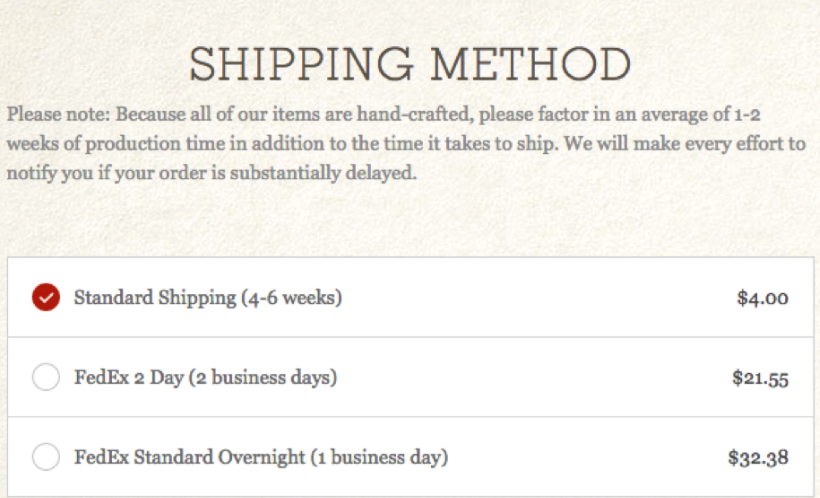Which Ecommerce Metrics Matter When You Want to Increase Sales
Marketers use ecommerce metrics daily to measure the performance of their sales channels and to assess the manner in which their budget is distributed. Each indicator discussed here can help you improve the profitability of any online store that you’re responsible for promoting.
Marketers and business owners know that access to accurate data is critical. Knowing what you should measure and how often to do so helps you make good decisions about your business so that it grows and increases in value.
Nine Essential Ecommerce Metrics
While there are hundreds of measurements that you can spend time and money tracking, there are some ecommerce metrics that won’t really affect a company’s bottom line. Those aren’t discussed here; the focus is on those Key Performance Indicators (KPIs) that impact profitability.
These indicators allow you to get a picture of what’s happening at different stages of the sales funnel.
Once you have that information, you can implement specific initiatives in each area and use the data to determine whether those strategies are increasing revenue. When your focus is on improving sales, these nine ecommerce metrics assess the manner in which your budget and the talents of your team members are being utilized in each marketing campaign:
1. Revenue By Traffic Source
Revenue by traffic source shows you where most of your profits are coming from. This may mean that you get a significant number of high value shoppers through a particular channel such as Instagram. It could also mean that you get a high volume of sales from Facebook ads. Using this information, you can determine where you should focus your main advertising efforts and spend in order to get the most from your budget.
You can also take this a step further and use revenue by device metric to determine whether you are making money mainly from your mobile site/app or main webpage.
2. Average Order Value
Average order value tells you the average sum spent on each order. By maximizing this metric, you can increase your overall revenue without spending to acquire more customers. You can also increase your average order value by promoting bundled products or services and by advertising other offers that increase your revenue per order.
3. Shopping Cart Abandonment Rate
When shoppers put items in their cart but do not complete the checkout process, it is referred to as shopping cart abandonment. The abandonment rate is the percentage of shoppers who abandon their cart compared to the total number of shoppers.
Customers may abandon their shopping cart for a variety of reasons, including higher than expected costs, the lack of their preferred payment option, or from simply getting distracted.
There are a number of ways to decrease shopping cart abandonment. First, you can try to highlight all costs upfront. This includes any shipping costs and taxes. Second, you can try to include as many different ways to pay as possible, as well as offering staggered, smaller payments. Another possible method is to build trust through positive reviews, so customers know the quality of your products directly from other customers. Last, but not least, you can use retargeted advertising. This is where you focus on customers who have previously shown interest in your products but did not complete a purchase. By advertising to them, or even sending them a newsletter with offers (should you have their contact details), you can draw them in and encourage a purchase.
4. Email Opt-ins
Email opt-ins allow you to create a database that you can use for promotions and education. You can share information on deals or workshops that interest your customers. Encourage them to opt in by offering something of value in exchange for their information and letting them know what you’ll do to protect their data.
You can also use emails as a means of retargeting customers who have previously shown interest in products or those who haven’t shopped with you in a certain period of time.
5. Sales Conversion Rate
This metric compares the number of sales to the number of visitors. For example, if you have 100 sales and 400 visitors, your sales conversion rate is 100/400, or 25%. To improve your conversion rate, you can implement initiatives to increase the number of targeted visitors. For example, if shipping delays are reducing sales, local SEO can help you target shoppers who are closer to you.
6. Customer Acquisition Cost
Your customer acquisition cost is calculated by dividing your marketing expenses for a particular time by the number of new customers gained during that same timeframe. The data will show you how to adjust your marketing plan to get a better return on your investment.
If you are paying a lot to acquire a small number of customers, a change to your advertising strategy may be in order. With cases like the example image presented below, data feed services can often help narrow down who you advertise to with ease. They do this in a number of ways, from title optimization to introducing negative keywords.
7. Customer Lifetime Value
Customer lifetime value tells you how much you can expect each customer to spend with you during the time that they do business with your organization. To obtain it, subtract the cost of acquiring them from the amount they spent with you.
If you spend very little to acquire them, you may break even after just one order. Some companies need several orders to break even. Once you have this value, you can ascertain how many orders you’ll need and implement strategies that increase customer loyalty, repeat customer sales, and upselling.
You’ll notice a subset of really high-value customers. Use your data to determine how you got those customers and what their spending habits are. You’ll benefit from using strategies that ensure you increase retention of those customers and gain more like them.
8. Repeat Customer Rate
Repeat customer rate gives marketers information on the number of customers who return for another purchase within a specific time. You can increase this by promoting more subscription-based products.
Customer retention rate
There are other metrics similar to repeat customer rate, such as customer retention rate. Customer retention rate essentially refers to your repeat customer rate over a longer period of time. It highlights whether repeat customers continue to buy from you in the future.

9. Refund and Return Rate
This metric shows you how often customers return a product or ask for a refund. In some sectors, tools that help customers choose the correct size or color item can reduce this. If your refund and return rate is high, your marketing team may need to ensure that your message is reaching customers whose needs can be accurately met by what you offer.
You can also reduce the refund rate by being clearer with the product specifications and images. Clarity goes a long way when selling online, so if a customer can see a product from several angles (product images), see it in use (lifestyle images like the one below), and read its dimensions, they are more likely to make a purchase based on the right information.
Your Next Step
Sales will improve when your resources are utilized to track and take action with each of these
ecommerce metrics. Your next step will depend on how many of them you’re already tracking and how quickly you can respond to the data.
Within the next few days:
- Use software to track all of the metrics
- Ensure that your software is accurate
- Choose at least one metric and develop an initiative to tackle it
- Where necessary, temporarily reallocate funds from less essential areas
- Educate your team about why the initiative is necessary and what you hope to achieve
- Collect data on which initiatives worked with the metric, and use this to develop even better strategies for your company
- Repeat the process with the other metrics that impact profitability
There’s always a chance that random events could produce a positive change in your results. Ensure that your test initiative is run on a sample that’s large enough to reduce the effect of randomness, and make it clear that the results are due to your actions. The effect that you see should also be fairly significant. For example, a 0.75% increase in sales could just be due to random fluctuations.
Conclusion
There are several ecommerce metrics that you should consider to increase sales. If you are not already tracking these and adjusting your marketing strategy based on the results, start today and improve your profitability in the long and short term. Tracking your metrics could be the start of growing your brand and pushing things in the right direction.







